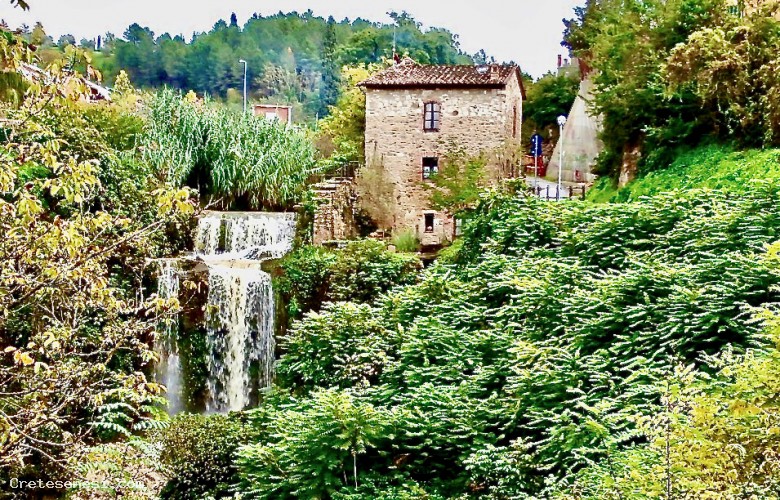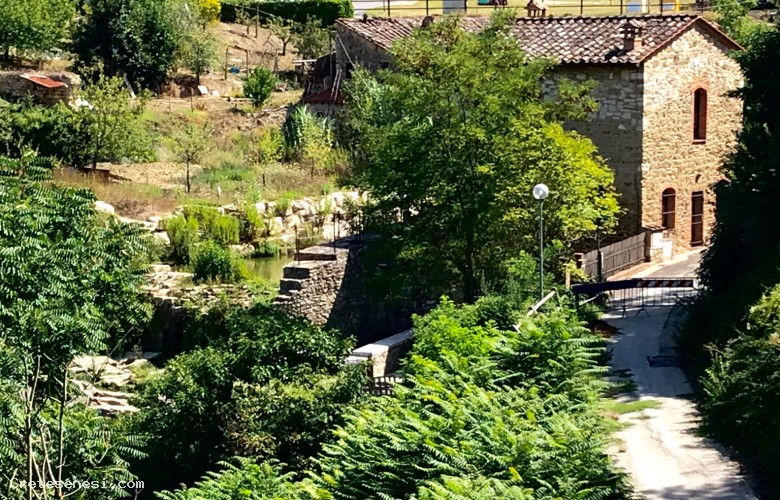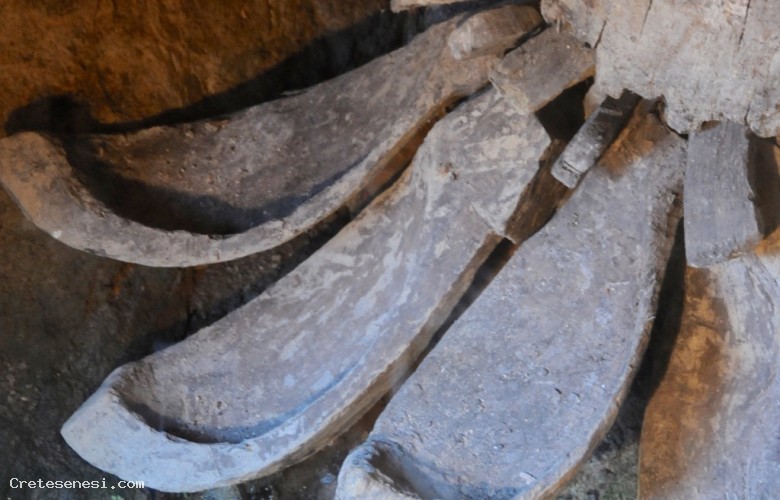Archaeological sites
M07 - Antico Mulino dei Preti
ASCIANO
.jpeg)
.jpeg)
.jpeg)


.jpg)
.jpg)
.jpg)
.jpg)
.jpg)
.jpg)
.jpeg)
The structure related to the Mill of the Priests has peculiar characteristics, representing the hub for the channeling of water towards the activities and wells inside the historic center, but also to feed the gore of all the mills further downstream. In fact, immediately afterwards, a very high natural waterfall brings the level of the river so low that it can no longer use its water for productive activities of any kind.
However this mill, today transformed into tourist accommodation, retains a series of special features:
The mill feeding stream, instead of being, as in the other side mills of the watercourse, is obtained directly in the riverbed, with the construction of a strong barrier a few meters before the waterfall.
The gora thus obtained, still extends today from the aforementioned barrier to the previous cascade of the Costa. Its periodic burial, caused by the materials transported by the river, has been foreseen from the beginning, so in the middle of the barrier a large opening has been left, normally closed by a wooden bulkhead. To remove the periodic accumulations of earth and stones, just remove the bulkhead momentarily, because the river water can almost automatically clean up the gora.
The prison of the Mill is the only one that still retains the spoon blades attached to the two stubs of vertical trees of the "ritrecine". All that has been proven up until today, because it is made of seasoned oak. At the top, in the wall that borders the gora, you can still see the nozzles of "shot" water on the spoons.
But the most striking feature is the maze of channels, placed on several levels, to be able to sort the water according to the needs of the moment.
The origin of this mill is documented in a papal bull already in 1178, which attributes its ownership to the nearby Pieve Romanica di Sant'Agata. This attestation allows us to be able to think that the beginning exploitation of the water of the river can date back to before the year one thousand.
Read historical-documental references by A.R.C.A.
Read the article: Old gorelli, water and its reuse
Click here to use the Navigator of the Mills, to know all the details.
The structure related to the Mill of the Priests has peculiar characteristics, representing the hub for the channeling of water towards the activities and wells inside the historic center, but also to feed the gore of all the mills further downstream. In fact, immediately afterwards, a very high natural waterfall brings the level of the river so low that it can no longer use its water for productive activities of any kind.
However this mill, today transformed into tourist accommodation, retains a series of special features:
The mill feeding stream, instead of being, as in the other side mills of the watercourse, is obtained directly in the riverbed, with the construction of a strong barrier a few meters before the waterfall.
The gora thus obtained, still extends today from the aforementioned barrier to the previous cascade of the Costa. Its periodic burial, caused by the materials transported by the river, has been foreseen from the beginning, so in the middle of the barrier a large opening has been left, normally closed by a wooden bulkhead. To remove the periodic accumulations of earth and stones, just remove the bulkhead momentarily, because the river water can almost automatically clean up the gora.
The prison of the Mill is the only one that still retains the spoon blades attached to the two stubs of vertical trees of the "ritrecine". All that has been proven up until today, because it is made of seasoned oak. At the top, in the wall that borders the gora, you can still see the nozzles of "shot" water on the spoons.
But the most striking feature is the maze of channels, placed on several levels, to be able to sort the water according to the needs of the moment.
The origin of this mill is documented in a papal bull already in 1178, which attributes its ownership to the nearby Pieve Romanica di Sant'Agata. This attestation allows us to be able to think that the beginning exploitation of the water of the river can date back to before the year one thousand.
Read historical-documental references by A.R.C.A.
Read the article: Old gorelli, water and its reuse
Click here to use the Navigator of the Mills, to know all the details.